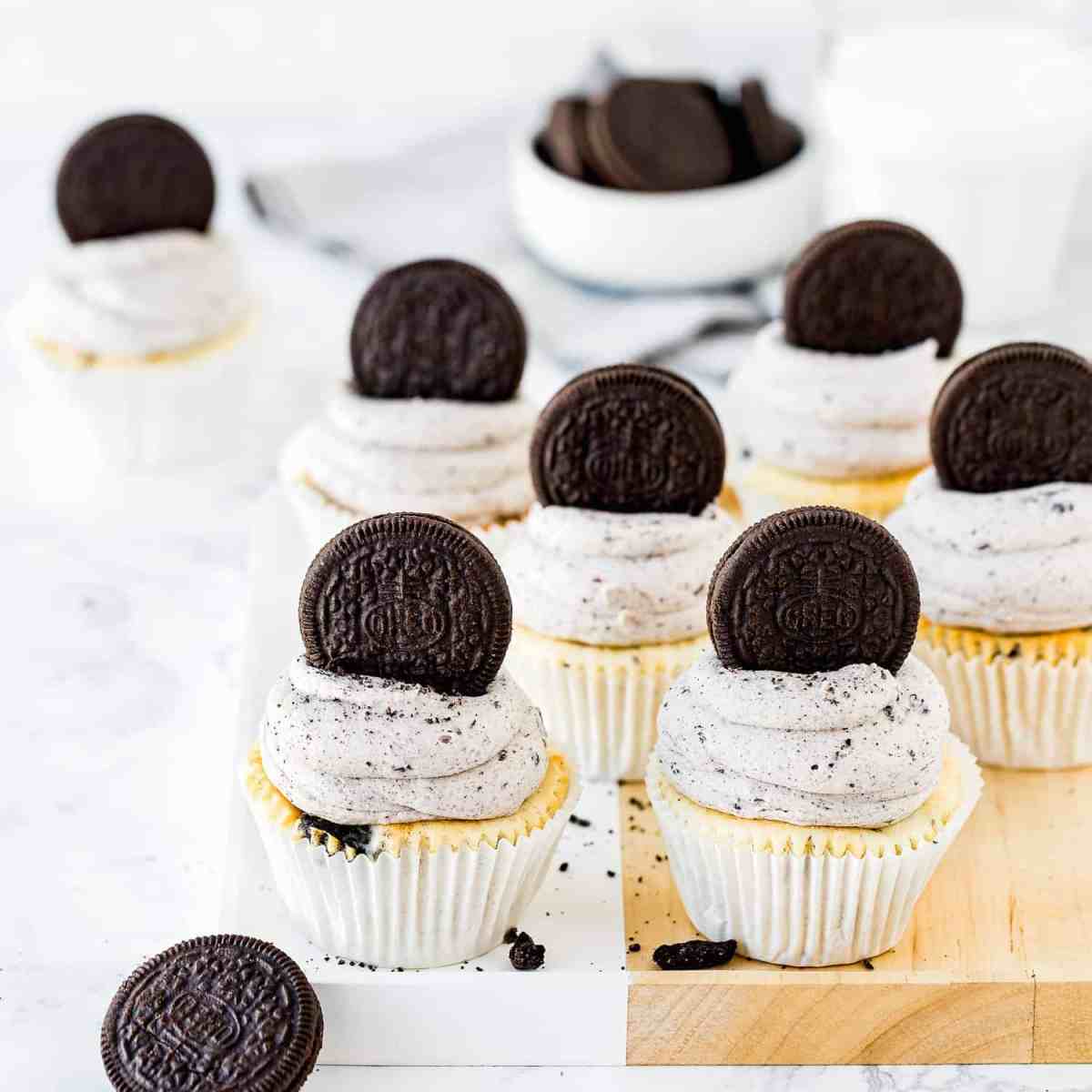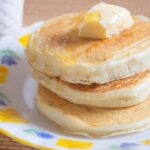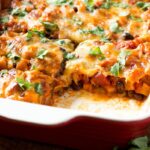Embark on a culinary adventure, exploring a world of vibrant flavors and textures, all without a single egg! This collection unveils surprising and delightful egg-free recipes, perfect for those with allergies, following specific diets, or simply seeking exciting new culinary experiences. From fluffy cakes to savory quiches and decadent desserts, prepare to be amazed by the possibilities of egg-free cooking.
We’ll delve into the secrets of achieving light and airy textures without eggs, exploring ingenious substitutes that maintain both flavor and structure. Discover innovative techniques for baking, creating savory dishes, and crafting delectable desserts—all while expanding your culinary repertoire and satisfying even the most discerning palates. Get ready to redefine your expectations of egg-free cuisine!
Egg-Free Baking Wonders

Embark on a delightful culinary journey exploring the world of egg-free baking, where fluffy cakes and delightful treats are surprisingly achievable without the use of eggs. Discover the simple techniques and versatile ingredients that unlock a realm of delicious possibilities, perfect for those with egg allergies or those simply seeking innovative baking experiences.
Five Egg-Free Baking Recipes
Here are five surprisingly delicious and easy-to-make egg-free baking recipes, perfect for beginners. Each recipe offers a unique flavor profile, showcasing the versatility of egg-free baking.
- Egg-Free Chocolate Chip Cookies: These chewy, decadent cookies boast the classic comfort of chocolate chips, achieved without a single egg. The flaxseed meal acts as a binder, creating a rich, moist texture. The intense chocolate flavor is balanced by the sweetness of brown sugar.
- Banana Bread without Eggs: This moist and flavorful banana bread relies on mashed bananas for both sweetness and binding, resulting in a naturally sweet and subtly spiced loaf. The texture is wonderfully soft and crumbly.
- Egg-Free Vanilla Cupcakes: These light and airy cupcakes are infused with a pure vanilla flavor. Applesauce replaces the eggs, contributing moisture and a delicate sweetness that complements the vanilla beautifully. A simple buttercream frosting (made with egg-free butter, of course) completes the experience.
- Egg-Free Oatmeal Cookies: These hearty cookies offer a wholesome and satisfying treat. The oats provide a pleasing chewiness, while the addition of cinnamon and raisins creates a warm, comforting flavor. The subtle sweetness is perfectly balanced by the natural flavors of the oats and raisins.
- Egg-Free Lemon Poppy Seed Muffins: These bright and zesty muffins are bursting with fresh lemon flavor and the delightful crunch of poppy seeds. The use of yogurt as a binder creates a tender crumb, while the lemon zest adds a vibrant citrusy aroma and taste.
Nutritional Comparison of Egg-Free Baked Goods
This table provides a comparative overview of the nutritional information for the five egg-free baked goods. Note that values are approximate and can vary based on specific ingredients and portion sizes.
| Baked Good | Calories (per serving) | Protein (per serving) | Fat (per serving) | Carbohydrates (per serving) |
|---|---|---|---|---|
| Egg-Free Chocolate Chip Cookies | 150-200 | 2-3g | 8-10g | 20-25g |
| Banana Bread (without eggs) | 180-220 | 3-4g | 8-10g | 30-35g |
| Egg-Free Vanilla Cupcakes | 200-250 | 3-4g | 10-12g | 30-35g |
| Egg-Free Oatmeal Cookies | 120-170 | 3-4g | 6-8g | 20-25g |
| Egg-Free Lemon Poppy Seed Muffins | 150-200 | 3-4g | 7-9g | 25-30g |
Making a Fluffy Egg-Free Sponge Cake
Achieving a light and airy texture in an egg-free sponge cake requires careful attention to technique. This recipe utilizes applesauce and baking powder to create a structure that mimics the effect of eggs.
- Prepare the Ingredients: Preheat your oven to 350°F (175°C). Grease and flour a 9-inch round cake pan. Measure out all your ingredients precisely: 1 ½ cups all-purpose flour, 1 ½ teaspoons baking powder, ½ teaspoon baking soda, ¼ teaspoon salt, 1 cup granulated sugar, ¾ cup unsweetened applesauce, 1 teaspoon vanilla extract, and 1 cup milk (dairy or non-dairy).
- Combine Dry Ingredients: In a large bowl, whisk together the flour, baking powder, baking soda, and salt. This ensures even distribution of leavening agents.
- Combine Wet Ingredients: In a separate bowl, whisk together the sugar, applesauce, and vanilla extract until well combined. Gradually add the milk, whisking until smooth.
- Combine Wet and Dry: Gently fold the wet ingredients into the dry ingredients, mixing until just combined. Do not overmix; a few lumps are okay. Overmixing develops gluten, resulting in a tough cake.
- Bake: Pour the batter into the prepared cake pan and bake for 30-35 minutes, or until a wooden skewer inserted into the center comes out clean.
- Cool and Serve: Let the cake cool in the pan for 10 minutes before inverting it onto a wire rack to cool completely. Dust with powdered sugar or add your favorite frosting for an extra touch of sweetness.
Mastering Egg-Free Cooking Techniques
Egg-free cooking presents unique challenges, demanding a deeper understanding of binding agents, emulsifiers, and leavening. Successfully navigating these challenges unlocks a world of delicious and inclusive recipes, catering to dietary restrictions and preferences. This section will explore common difficulties and their solutions, delve into the science of egg substitutes, and provide a detailed, step-by-step guide to creating a creamy, egg-free pasta dish.
Egg-free cooking often results in altered textures and structures compared to recipes containing eggs. Eggs contribute to binding, leavening, emulsification, and moisture retention. Replacing these functionalities requires careful consideration of alternative ingredients and cooking methods. Common issues include dry or crumbly baked goods, sauces lacking creaminess, and dishes lacking structural integrity.
Common Egg Substitutes and Their Applications
Understanding the role of eggs in a recipe is crucial for selecting the appropriate substitute. Different substitutes offer varying levels of success depending on the desired outcome. The following table summarizes common substitutes and their best applications:
| Egg Substitute | Primary Function Replaced | Best Applications | Limitations |
|---|---|---|---|
| Applesauce (unsweetened) | Binding, moisture | Muffins, cakes, quick breads | Can add a slightly sweet and moist texture; may not be suitable for all recipes. |
| Mashed Banana | Binding, moisture, sweetness | Cakes, muffins, pancakes | Adds significant sweetness and moisture; best suited for recipes that already incorporate sweetness. |
| Flaxseed Meal or Chia Seeds | Binding | Baked goods, vegan meat substitutes | Requires pre-mixing with water to form a gel; can impart a slightly nutty flavor. |
| Silken Tofu | Binding, moisture, creaminess | Soufflés, custards, vegan mayonnaise | Adds a subtle, slightly beany flavor; works best in recipes that don’t rely on a strong flavor profile. |
The Science of Egg Substitutes
The success of egg substitutes hinges on their ability to mimic the key properties of eggs. For instance, flaxseed meal and chia seeds form a gel when mixed with water due to the interaction of their mucilage with water molecules, creating a binding effect similar to egg proteins. Applesauce and mashed banana contribute moisture and binding through their natural pectin and starch content. Silken tofu provides a creamy texture and binding properties due to its high water content and protein structure. Understanding these mechanisms allows for informed substitution choices and successful egg-free baking and cooking.
Preparing a Creamy Egg-Free Pasta Dish
This recipe demonstrates how to create a creamy pasta sauce without eggs, focusing on techniques for achieving a luxurious texture.
Ingredients:
- 1 pound pasta (any shape)
- 1 tablespoon olive oil
- 1 onion, finely chopped
- 2 cloves garlic, minced
- 1 (28 ounce) can crushed tomatoes
- 1 cup vegetable broth
- 1/2 cup nutritional yeast (for cheesy flavor)
- 1/4 cup cashew cream (soaked cashews blended with water)
- Salt and pepper to taste
- Fresh basil, chopped (for garnish)
Instructions:
- Cook pasta according to package directions. Reserve about 1/2 cup of pasta water before draining.
- While pasta cooks, heat olive oil in a large saucepan over medium heat. Add onion and cook until softened, about 5 minutes.
- Add garlic and cook for 1 minute more, until fragrant.
- Stir in crushed tomatoes, vegetable broth, and nutritional yeast. Bring to a simmer and cook for 15 minutes, stirring occasionally.
- Stir in cashew cream. Season with salt and pepper to taste. If the sauce is too thick, add a little pasta water until desired consistency is reached.
- Add cooked pasta to the sauce and toss to coat.
- Serve immediately, garnished with fresh basil.
This journey into the world of egg-free cooking has showcased the incredible versatility and deliciousness achievable without relying on eggs. From simple substitutions to innovative techniques, we’ve uncovered a wealth of possibilities for creating satisfying and flavorful meals and desserts. So, embrace the challenge, experiment with these recipes, and discover your own signature egg-free culinary masterpieces. The possibilities are as limitless as your imagination!
Question & Answer Hub
Can I freeze egg-free baked goods?
Yes, many egg-free baked goods freeze well. Wrap them tightly in plastic wrap and then foil, or use freezer-safe containers. Thaw overnight in the refrigerator.
What are the best substitutes for eggs in baking?
Popular choices include applesauce, mashed banana, flaxseed meal (mixed with water), and commercial egg replacers. The best choice depends on the recipe and desired outcome.
Are all egg-free recipes suitable for vegans?
Not necessarily. While many egg-free recipes are vegan, some may use dairy products or other non-vegan ingredients. Always check the recipe ingredients carefully.
How long do egg-free recipes typically last?
This varies depending on the recipe. Proper storage (refrigeration or freezing) is crucial. Generally, egg-free baked goods last for several days, while savory dishes may last 3-4 days refrigerated.


